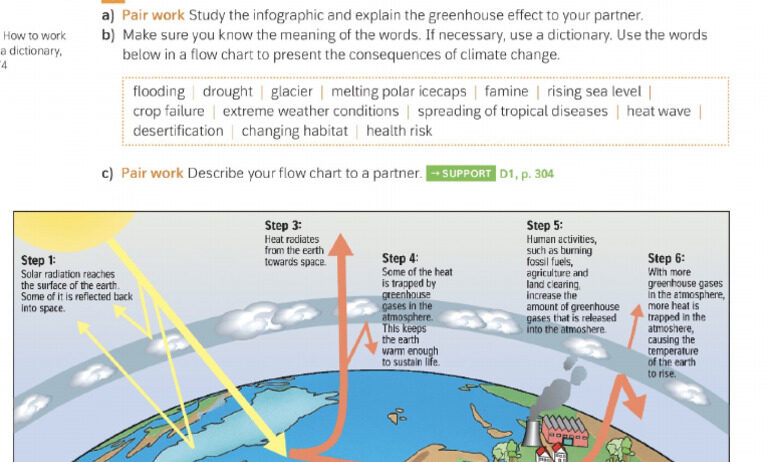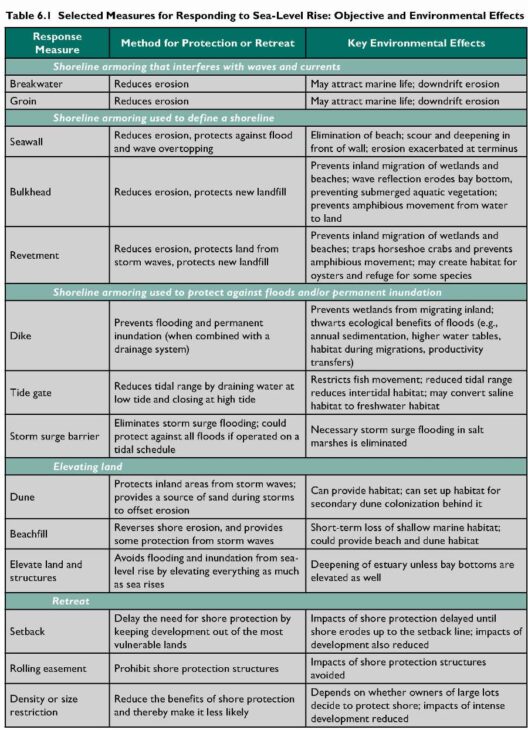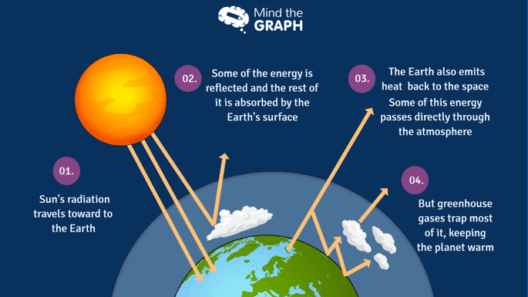From the vast expanse of the cosmos to the intricate tapestry of life here on Earth, the greenhouse phenomenon serves as a crucial yet often misunderstood cornerstone of our environmental reality. Imagine our planet as a delicate sapphire, ensconced within a gossamer blanket that not only nurtures but also binds it. This metaphorical veil of gases—our atmosphere—plays an indispensable role in regulating temperatures and sustaining life. Yet, it also harbors the potential for catastrophic consequences when its balance is disturbed. This guide will demystify the greenhouse phenomenon, illustrating its workings and the dire need for conscientious stewardship of our planet.
Understanding the Greenhouse Effect
The greenhouse effect can be likened to an elaborate symphony, where each instrument contributes to the harmonious coexistence of warmth and life. In the most fundamental sense, the Earth’s surface absorbs sunlight, converting it into heat. This warmth is then emitted back toward space in the form of infrared radiation. However, certain gases in the atmosphere—primarily carbon dioxide (CO2), methane (CH4), and nitrous oxide (N2O)—act as an insulating blanket. They absorb this outgoing radiation and re-radiate it in all directions, including back towards the Earth’s surface. This is where the ‘greenhouse’ analogy takes shape; just as a glasshouse traps heat for plants to thrive, these gases warm our planet, enabling life as we know it.
However, it is essential to acknowledge that this phenomenon, while crucial for maintaining life, is subject to human influence. Industrialization, deforestation, and fossil fuel consumption have escalated the concentration of greenhouse gases in our atmosphere. As a result, the very blanket that guards us has become a source of peril, thickening at an alarming rate and intensifying global temperatures—a curious twist in an otherwise crucial narrative.
Unpacking the Greenhouse Gases
Imagine a bustling marketplace where various vendors sell different commodities. In this environmental bazaar, greenhouse gases each play their distinct role, with some more influential than others in the overall equation of global warming.
The leviathan in this scenario is carbon dioxide (CO2). Emitted through activities such as burning fossil fuels and deforestation, CO2 accounts for the lion’s share of human-caused warming. Its longevity in the atmosphere—persisting for centuries—magnifies its impact, making it a formidable foe in the battle against climate change.
Next comes methane (CH4), a gas with significantly greater heat-retaining ability, albeit existing in much lower concentrations. Produced during agricultural activities, certain industrial processes, and even by the natural decay of organic matter in landfills, methane’s intrinsic potency means that even limited quantities can trigger pronounced climate impacts.
Finally, we have nitrous oxide (N2O), often a byproduct of agricultural and industrial activities. Though lesser known, its capacity to trap heat is approximately 300 times more effective than CO2, making it an essential focus area in climate mitigation strategies.
Together, these gases create a cocktail that indiscriminately warms our environment, triggering a series of interrelated phenomena that characterize climate change.
The Impacts of an Intensified Greenhouse Effect
As the greenhouse blanket thickens, it becomes a double-edged sword. While it allows for the flourishing ecosystems we cherish, it simultaneously heralds a range of detrimental effects that threaten the very fabric of our existence.
One glaring consequence is the prevalence of extreme weather events. Picture the once-unremarkable spring rain morphing into torrential downpours, or arid lands succumbing to persistent droughts. These alterations not only disrupt traditional agricultural practices but also lead to food insecurity for millions globally.
Furthermore, the warming climate engenders rising sea levels due to polar ice melt and the thermal expansion of seawater—taking the metaphor of our planet as a sapphire to new depths. Coastal cities are left vulnerable, facing inundation that threatens homes, livelihoods, and infrastructure. New, yet dilapidated landscapes are emerging as ecosystems struggle to adapt—a poignant testament to a world in turmoil.
Beyond the physical realm, the anthropogenic changes elicit sociocultural ramifications. Communities are being uprooted, migration patterns are altered, and conflict over dwindling resources becomes a grim reality. The narrative of the greenhouse phenomenon transitions from a simple scientific explanation to a complex, multifaceted human saga.
A Call to Action: Navigating the Future
The accumulation of knowledge regarding the greenhouse phenomenon instills a sense of urgency to act. The realities we face are formidable, yet therein lies the power of collective human action—an antidote to inertia.
Individual choices play a crucial role: reducing energy consumption, advocating for renewable energy sources, and supporting sustainable practices are tangible steps toward combating climate change. Moreover, engaging in local initiatives and voicing our concerns may illuminate paths to policy changes that prioritize Earth’s well-being.
Ultimately, grappling with the greenhouse phenomenon illuminates a broader truth: the interconnectivity of all life forms hinges upon our ability to respect and protect the delicate balance of our atmosphere. Just as the intricate layers of Earth’s atmosphere envelop the sapphire sphere below, so too must our collective consciousness envelop the urgency of our environmental responsibilities.
In navigating this complex narrative, we must wield knowledge as both a shield and a beacon, guiding us toward a sustainable future. The time for dialogue, action, and relentless advocacy is now—if we are to preserve the intricate yet fragile ecosystem we call home.








